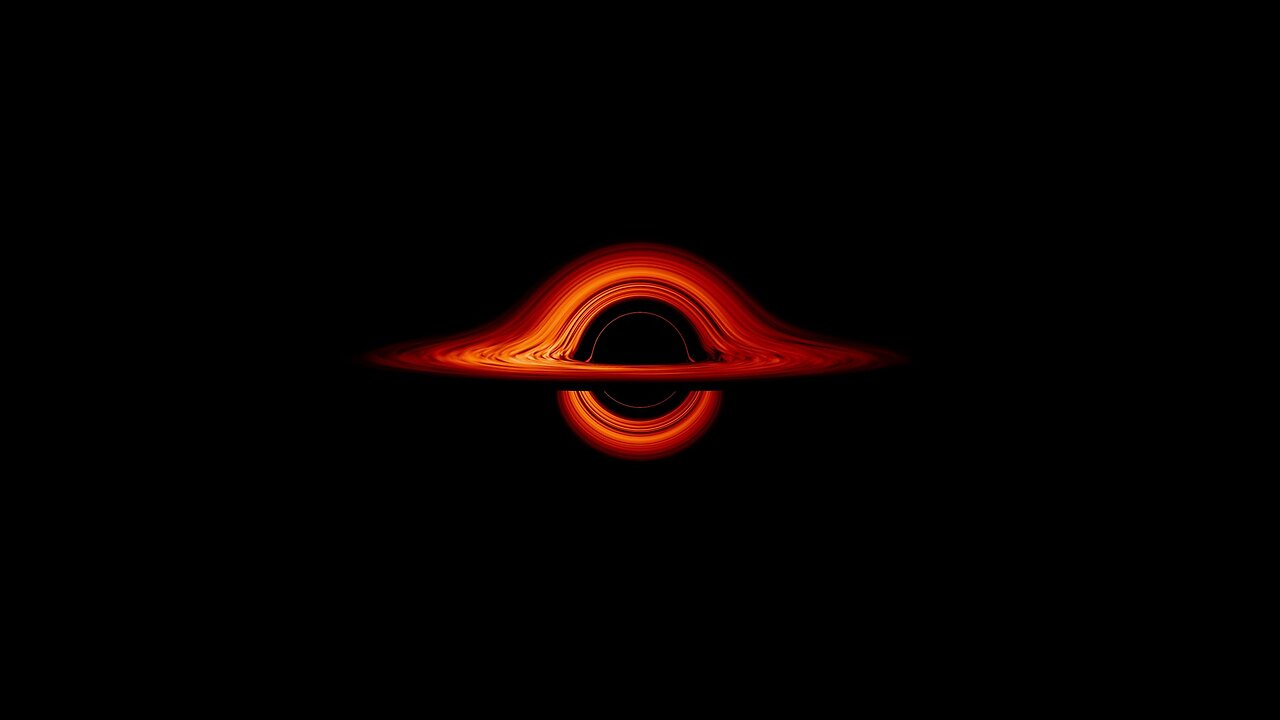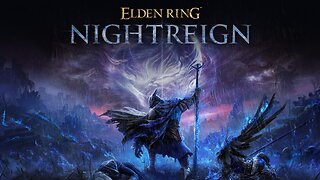Premium Only Content

Black Hole Accretion Disk Visualization
Black Hole Accretion Disk Visualization, This movie shows a complete revolution around a simulated black hole and its accretion disk following a path that is perpendicular to the disk. The black hole’s extreme gravitational field redirects and distorts light coming from different parts of the disk, but exactly what we see depends on our viewing angle. The greatest distortion occurs when viewing the system nearly edgewise.
As our viewpoint rotates around the black hole, we see different parts of the fast-moving gas in the accretion disk moving directly toward us. Due to a phenomenon called "relativistic Doppler beaming," gas in the disk that's moving toward us makes that side of the disk appear brighter, the opposite side darker. This effect disappears when we're directly above or below the disk because, from that angle, none of the gas is moving directly toward us.
When our viewpoint passes beneath the disk, it looks like the gas is moving in the opposite direction. This is no different that viewing a clock from behind, which would make it look like the hands are moving counter-clockwise.
CORRECTION: In earlier versions of the 360-degree movies on this page, these important effects were not apparent. This was due to a minor mistake in orienting the camera relative to the disk. The fact that it was not initially discovered by the NASA scientist who made the movie reflects just how bizarre and counter-intuitive black holes can be! This new visualization of a black hole illustrates how its gravity distorts our view, warping its surroundings as if seen in a carnival mirror. The visualization simulates the appearance of a black hole where infalling matter has collected into a thin, hot structure called an accretion disk. The black hole’s extreme gravity skews light emitted by different regions of the disk, producing the misshapen appearance.
Bright knots constantly form and dissipate in the disk as magnetic fields wind and twist through the churning gas. Nearest the black hole, the gas orbits at close to the speed of light, while the outer portions spin a bit more slowly. This difference stretches and shears the bright knots, producing light and dark lanes in the disk.
Viewed from the side, the disk looks brighter on the left than it does on the right. Glowing gas on the left side of the disk moves toward us so fast that the effects of Einstein’s relativity give it a boost in brightness; the opposite happens on the right side, where gas moving away us becomes slightly dimmer. This asymmetry disappears when we see the disk exactly face on because, from that perspective, none of the material is moving along our line of sight.
Closest to the black hole, the gravitational light-bending becomes so excessive that we can see the underside of the disk as a bright ring of light seemingly outlining the black hole. This so-called “photon ring” is composed of multiple rings, which grow progressively fainter and thinner, from light that has circled the black hole two, three, or even more times before escaping to reach our eyes. Because the black hole modeled in this visualization is spherical and non-rotating, the photon ring looks nearly circular and identical from any viewing angle. Inside the photon ring is the black hole’s shadow, an area roughly twice the size of the event horizon — its point of no return.
This visualization is “mass invariant,” which means it can represent a black hole of any mass. The size of the black hole's shadow is proportional to its mass, but so is the size of the accreetion disk, so its properties scale accordingly.
Simulations and movies like these really help us visualize what Einstein meant when he said that gravity warps the fabric of space and time. Released Wednesday, September 25th, 2019 This video is public domain and along with other supporting visualizations can be downloaded from the Scientific Visualization Studio at: http://svs.gsfc.nasa.gov/13425 Credit: NASA’s Goddard Space Flight Center/Jeremy Schnittman/Scott Wiessinger If you liked this video, subscribe to the NASA Goddard YouTube channel: http://www.youtube.com/NASAExplorer Follow NASA’s Goddard Space Flight Center • Instagram http://www.instagram.com/nasagoddard • Twitter http://twitter.com/NASAGoddard • Twitter http://twitter.com/NASAGoddardPix • Facebook: http://www.facebook.com/NASA.GSFC • Flickr http://www.flickr.com/photos/gsfc
-
 1:49:53
1:49:53
Glenn Greenwald
6 hours agoDOGE: Promises vs. Reality; Ukraine's Drone Attacks on Russian Air Bases; Gaza Ceasefire Deal Developments | SYSTEM UPDATE #463
84.1K38 -
 2:13:34
2:13:34
RiftTV/Slightly Offensive
5 hours agoZelensky Declares WAR on RUSSIA.. Trump FUMING Over Surprise ATTACK | The Rift | Guest: Sarah Stock
30.5K60 -
 LIVE
LIVE
a12cat34dog
3 hours ago2011 GAME PREDICTS 2027 :: Homefront :: AMERICA HAS FALLEN {18+}
77 watching -
 2:37:10
2:37:10
PudgeTV
7 hours agoMod Mondays Special Ep | Gaming on Rumble Ambassadors | The Rumble Takeover
38.8K4 -
 LIVE
LIVE
Dome After Dark
3 hours agoDome After Dark: Monday Night Hangout!
87 watching -
 LIVE
LIVE
RyuMuramasa✧
4 hours agoLimveld's Destiny | Elden Ring Nightreign | LIVE Full Walkthrough!
37 watching -
 1:52:45
1:52:45
Robert Gouveia
5 hours agoTrump at SUPREME COURT! Election Lawsuit ACCEPTED! Gun Rights IGNORED!
43.2K11 -
 12:34
12:34
From The Desk Of Anthony Pompliano
7 hours ago $6.20 earnedElon Musk & Marc Andreessen Agree: Robotics Will Eclipse EVERYTHING
46.5K5 -
 2:40:44
2:40:44
Fragniac
4 hours ago🔴THE FINAL STREAM ...💥 ─╦ ╤ (•_-) - CLIP EVERYTHING❗🎬📽 🎞
10.5K1 -
 LIVE
LIVE
Deaf Gamer Girl
4 hours agoDGG playtime | June Creator Program Day #1 ! | lurk are welcome | !throne !feature
147 watching